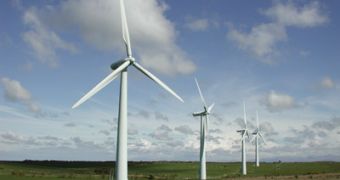Only yesterday, the online journal “Nature Climate Change” saw the publication of a new article assessing exactly how much wind power we have at our disposal and what impact our harvesting this renewable energy source would have on the environment.
Apparently, under current estimates, winds worldwide stand to become the main drive behind our society's quest for sustainability, as this renewable energy source is more than capable of seeing that most of our electricity demands are met whilst the environmental impact of households and businesses is kept down at a minimum.
According to the scientists who worked on this report, in order for wind energy to become “a primary source of near-zero-emission electric power,” it is necessary that the global energy industry sees to the installation of atmospheric turbines.
This is because, as opposed to ground and ocean-based units, these energy generating stations can deal with harvesting high-altitudes winds, which are well known for being both more constant – and thus more reliable – and significantly faster.
Naturally, this does not mean that ground and ocean-based units need be discarded altogether. Quite the contrary: these two means of harvesting wind power need to complement each other.
In plain numbers: estimates carried out by these researchers have shown that roughly 400 terawatts of power could be generated at ground and ocean level, whereas atmospheric wind turbines could generate as much as 1,800 terawatts.
In case one was wondering how harvesting this much wind power at a time would impact on the environment, it seems that, as long as the turbines are spread out over large portions of land and not simply made to stand together in small areas, the natural balance of our planet would have no damage done to it.
However, this study only takes into consideration the future of the wind power industry from a geophysical standpoint, meaning that aspects such as technology and related costs are left out of the question.
As environmental scientist Ken Caldeira puts it, “Looking at the big picture, it is more likely that economic, technological or political factors will determine the growth of wind power around the world, rather than geophysical limitations.”

 14 DAY TRIAL //
14 DAY TRIAL //